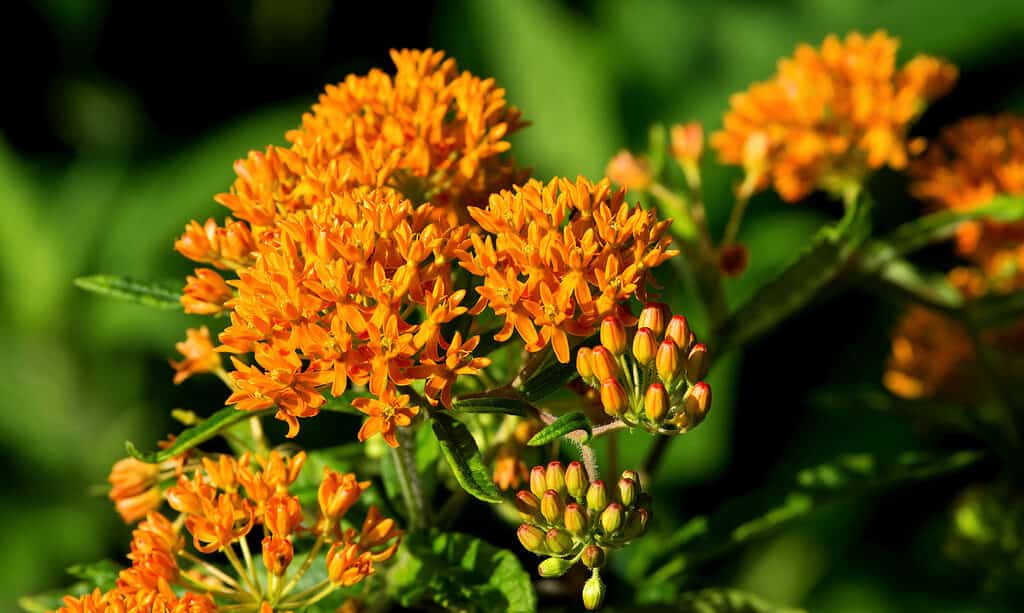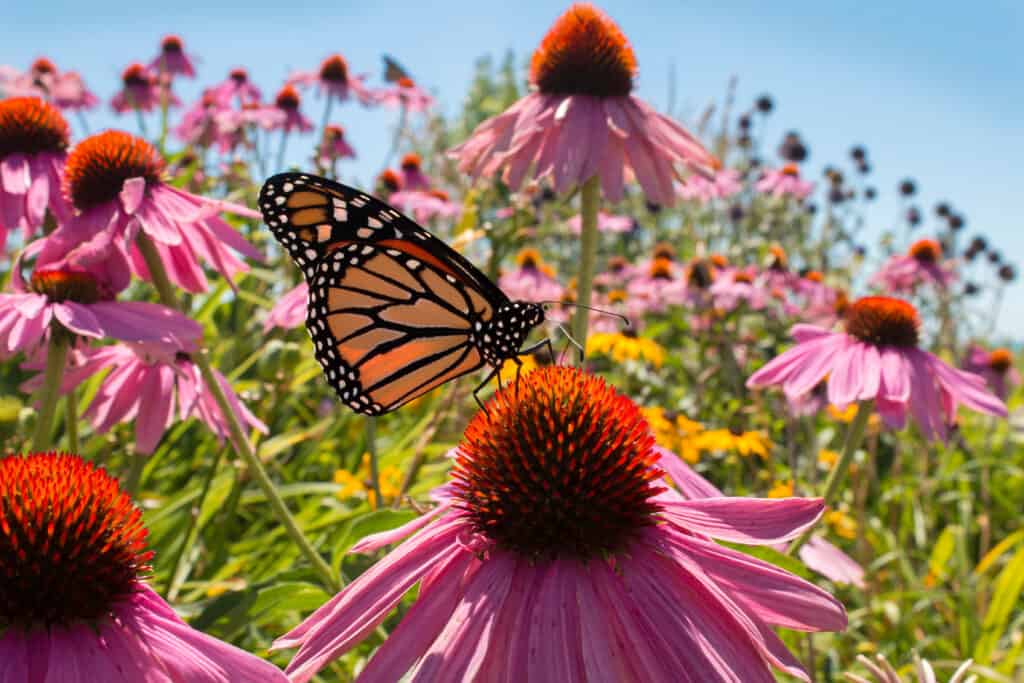There’s nothing like looking at rows of bright orange, yellow, and magenta blooms filling your garden space. But when planting flowers, it’s important to know which ones will grow best. In Michigan, the weather is mild in the summers and winters are usually pretty cold, with average highs just above freezing. Despite the fact that the state is covered in snow for a few months, it’s actually a great place for growing flowers during other times.
Something to keep in mind before planting a garden is the amount of work that you’re willing and able to put into it. Some species of flowers are more prone to pests, others need constant care and pruning to look their best. It’s important to honestly evaluate yourself and what you’re wanting in a garden. Another key step is to establish some sort of color theme — or, go with a wild, multicolor theme that has no order or pattern. The choice is up to you, but it’s key to make those kinds of decisions before your flowers are in the ground.
Now, once you’ve squared off an area and decided on a few colors or types of flowers, you can get ready to start planting. We’ve compiled a list of the best flowers to plant in Michigan to help you plot out your perfect flower garden.

Plot out your space and consider what types of flowers you want to grow, as well as which colors, before you get started.
©Nitr/Shutterstock.com
Michigan’s Planting Zones
Michigan falls into the hardiness zones of 4a through 6b. Most of the southern and coastal parts of Michigan are classified as 6a and 6b zones. The central part of the state, including Lansing and areas further north are mainly considered 5a and 5b. The northernmost parts of the state are 4a and 4b. It’s important to know which zone you’re in before planting because certain plants tolerate some zones better than others. If you’re planting from seed, you may need to sow the seeds at a different time depending on which zone you’re planting them in.
Daisies
There’s nothing like the classic look of a gorgeous daisy.
Daisies are pretty easy plants to manage and grow. The hardest part about this species is knowing when to plant them. Unless you’re planning to purchase the live plant from a nursery, you’ll be starting from seed. You’ll want to start growing your seeds indoors about 10 days before the average last frost date for your area. You can search online or keep a record to know when the last frost usually occurs (it’s often in April or May). Once you know the date of the last frost, go 10 days back, and mark that date on your calendar to start your daisy seeds.
Plant your seeds in 1/16” of soil depth, and use overhead lights or set them by a sunny window. Keep them moist and wait, you’ll see germination within 7 to 14 days. Once they have gotten established, you can transplant them outside in a few weeks. It’s up to you exactly how long to let them grow indoors before moving them. A few extra weeks can strengthen the stem and give them the support they need to survive outside. If you’re starting your plants indoors in pots first, you can set the pots outside for a few hours each day to increase the plant’s hardiness.
Whether you grow your daisies from seed or buy the live plant from a nursery, you’ll want to put them in the ground after the last frost. This is usually sometime in late April or May. They will usually grow without much maintenance, and they thrive off of heat and sunlight, so plant them in full sun.

There’s nothing like the timeless look of a daisy bloom to add character to your garden.
©Christina Duarte/Shutterstock.com
Giant Hyssop
Giant hyssop is native to Michigan and it grows very well in the state. It comes in yellow, blue, green, and purple varieties. Since it naturally grows in the area, it’s a pretty easy plant to maintain. It likes to grow in moist soil and semi-shaded areas, but can also survive in full sun.
The plant is a part of the mint family, which you will notice if you crush the blooms as they have a minty scent. You’ll need to take a bit of caution when planting this aromatic plant, as they will die in weather under 50 degrees. Once the weather is right and your plants are in the ground, you’ll start seeing blooms pretty quickly. Giant hyssop flowers from summer until the first freezes of fall.
The best part of planting giant hyssop isn’t just the beautiful blooms, it’s what they bring with them. Hyssop is extremely attractive to pollinators, including species of bees, butterflies, and moths. You’ll get to see some gorgeous critters as they visit your colorful flowers!

Giant hyssop comes in purple, yellow, blue, and green varieties.
©Danny Hummel/Shutterstock.com
Dahlias
Dahlias are the ultimate flower for lazy gardeners and those who want beautiful flowers without much investment. The reason for that is because they are so easy to grow. They don’t have much soil preference and survive in full or partial sun. They are drought tolerant and rarely need to be watered, and they can grow well in garden boxes or in containers.
You can start your dahlia plants indoors if you get them early enough to worry about frost still. Because they grow so easily in containers, you can move them in and out for a few months as the weather is still changing. If you like the look, feel free to leave them in the pot as they grow well inside them. You can also transplant them to the garden and they usually do very well that way.

Dahlias are well-loved because they come in many different colors and produce intricate-looking blooms.
©iStock.com/AndreaObzerova
Butterfly Weed
Butterfly weed is one of my favorite flowers to grow anywhere because it’s so beneficial to the environment, as well as beautiful! The vibrant orange blooms are the most common variety, but there are some mixtures with red and yellow colors. There’s a reason why these flowers are called “butterfly weed”. Milkweed is the family that the flower is in, and it’s the main fuel for butterflies, especially monarchs that are making their annual migration to Mexico. This means that this flower will bring some gorgeous pollinators to your garden for you to watch and enjoy.
Butterfly weed grows very well in full sun, and can survive some of the harshest winters. They are grown best from starter plants, as seeds are tough to germinate. But once the plant is growing, it’ll stick around for many years to come with very little maintenance.

The butterfly weed usually grows to 1-3.5 feet tall.
©iStock.com/McKinneMike
Coneflowers
Coneflowers are a great perennial for Michigan. They’re drought-tolerant, require little work, and are another favorite of pollinators. They grow up to six feet tall but more commonly stay between 2 and 4 feet in height. Coneflowers love the sun and thrive in a full-sun garden, but can also be planted in partial shade.
The best thing about coneflowers is that they’re very hardy and have been known to survive Michigan winters. They don’t need much water at all, and it’s recommended to water them only if there is less than one inch of rainfall each week. Past that, there isn’t a lot that you need to do to maintain coneflowers. You can remove the dead blooms and trim off branches that look floppy to encourage new growth. You can also cut back the plants to around 3 inches above the ground each spring after the last frost to create bushier plants.

Coneflowers attract pollinators with their vibrant colors and attractive scent.
©Media Marketing/Shutterstock.com
Maintaining the Best Flowers in Michigan
There’s a reason why these five species made our list of best flowers to plant in Michigan. They are some of the easiest species to maintain, yet they produce some of the most vibrant blooms. They also attract some amazing pollinators and add to the native environment of the state rather than take away from it.
One common practice to maintain any flowering species is deadheading. You can help your garden plants to produce more flowers if you remove old flowers or damaged ones. This will make the new flowers appear neater and keep your plants healthier in the long run. Try deadheading your coneflowers and dahlias for an exceptional-looking bloom. Happy planting!
The photo featured at the top of this post is © iStock.com/Jasmina81
Thank you for reading! Have some feedback for us? Contact the AZ Animals editorial team.







